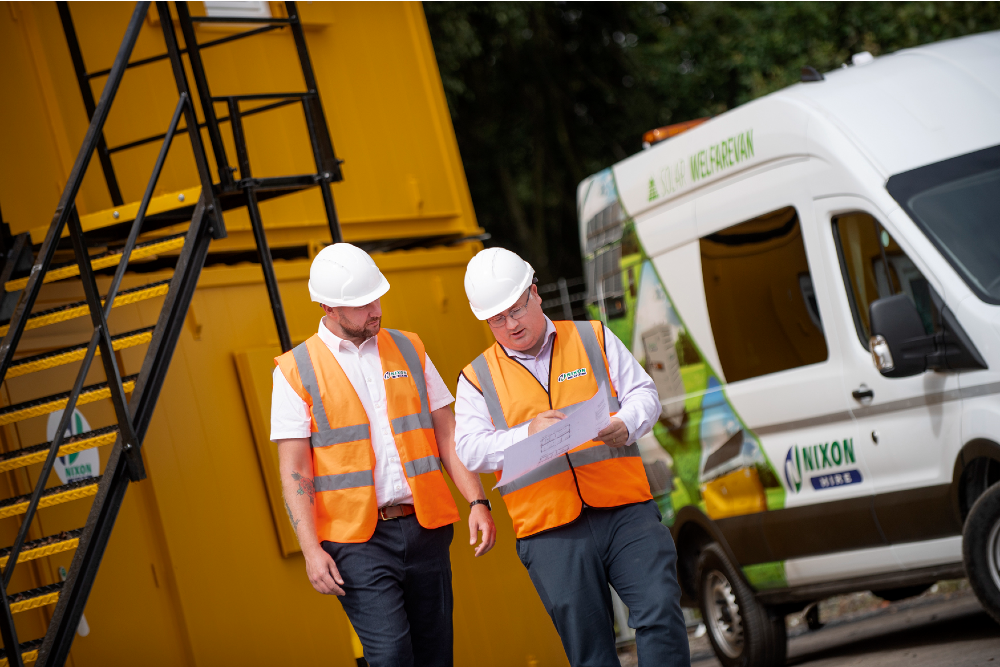Blog; We Need to Treat Health and Safety as a Priority, not an Afterthought


Written by:
Anthony Livermore, SHEQ Director
Nixon Hire
. 20th June 2025

Cultural change happens only when leaders embrace it
Strong health and safety foundations in today’s fast-paced, high-risk construction industry are critical.
The UK construction sector records among the highest workplace injuries and fatalities. In 2023/24, the HSE reported 4,050 injuries to construction employees; 62% caused incapacitation for over seven days*. Despite regulations and advancements in safety technology, many companies still treat safety as a box-ticking exercise rather than a critical part of their strategy.
While executives recognise the importance of protecting staff and avoiding financial penalties, the true cost of a safety lapse runs far deeper.
The “iceberg model” highlights often-overlooked costly consequences. At the tip of the “iceberg” are the instant and obvious repercussions if an employee is injured, such as medical bills, fines, and damaged equipment. What is underneath these initial impacts, however, is rarely considered and can result in unanticipated and expensive consequences such as training costs, increased insurance premiums, reduced productivity and morale, reputational damage and the loss of trust internally and externally.
To counter poor health and safety practice over the long-term, we need cultural change starting at the executive level.
Leadership: the missing link
A key barrier to embedding a safety-first culture is inconsistent leadership commitment. While regulatory compliance is essential, engagement from executives is often missing. Without actively championing safety, employees receive the message that speed and cost-cutting take precedence.
Executives must set, reinforce, and demonstrate safety standards and implement initiatives which produce tangible results. This means prioritising safety in strategic decisions, allocating resources and leading by example.
Proactivity from the top will help to set the tone and foster conversation on the importance of health and safety. These could be on the ground measures including, conducting site visits and recognising outstanding safety practices. They could also be bigger picture, executives could embed safety performance into KPIs, implement regular training and invest in digital tools.
It is, in short, essential to inform stakeholders that health and safety is the priority.
Bridging the communication gap
Safety failures often stem from breakdowns in communication, especially in a sector reliant on temporary staff, and multi-site operations. Misinterpretation or misunderstanding of safety protocols lead to accidents.
Employers must establish clear, standardised safety communications systems that reach every worker. Regular briefings, digital platforms, and instant reporting channels should be the norm, with induction programmes being the critical first step in setting the standard rather than being a mere formality.
Committing to continuous training
Despite complex machinery and hazardous environments, many businesses focus solely on initial training without ongoing development. Safety training must be continuous, incorporating drills, refreshers, and emerging risk education. Through innovation, health and safety can be improved with technology-led solutions. This might be real-time hazard reporting, wearable fatigue monitors, digital site mapping, and AI analysis of CCTV to spot unsafe behaviours.
By fostering a culture of learning and development, businesses can significantly reduce the likelihood of incidents and ensure their workforce remains well-equipped to handle risks.
A collective industry responsibility
Safety is not just a legal obligation; it’s an ethical imperative. Companies that fail to integrate safety risk not only regulatory penalties but long-term reputational and operational damage.
Businesses must commit to industry-wide safety excellence. If you are managing a team, consider the last time you assessed your health and safety training.
Let’s stop treating safety as an afterthought and move away from excuses and box-ticking. We need to redefine health and safety as a non-negotiable pillar of business success which protects workers, strengthens organisations, and elevates our industry.
* HSE, Construction Statistics in Great Britain, 20 November 2024, p21